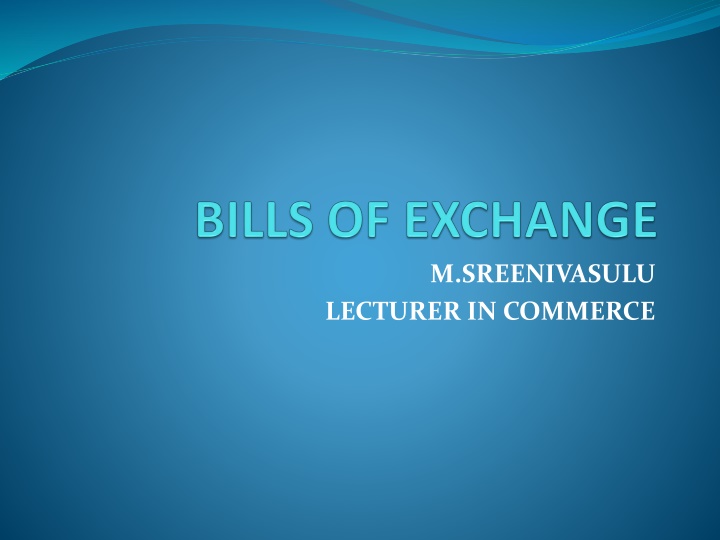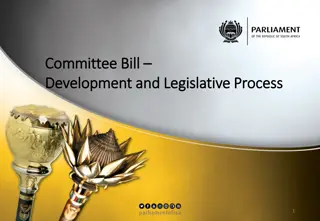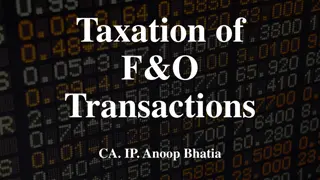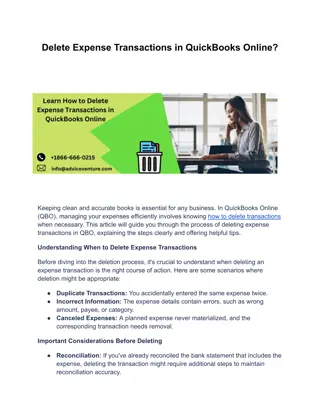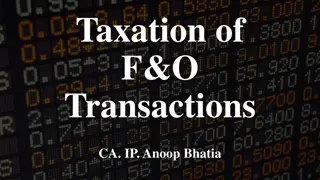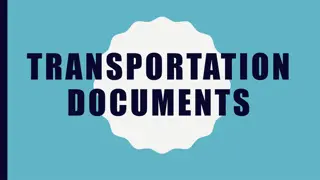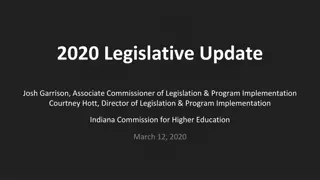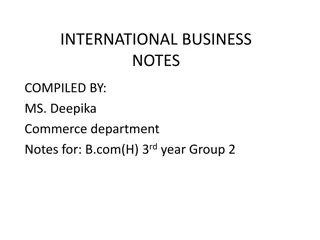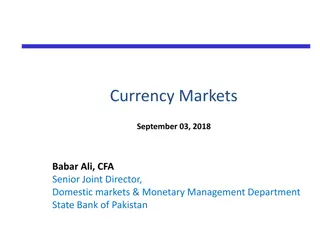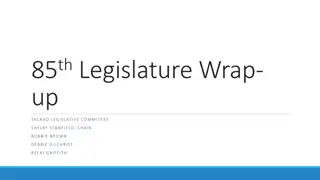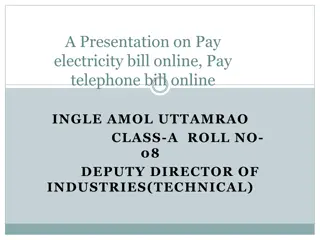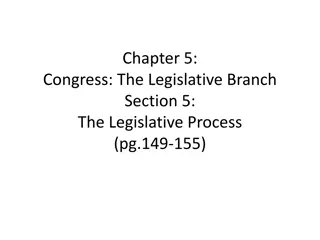Problems and Solutions in Bills of Exchange Transactions
Explore various scenarios involving promissory notes, bill discounts, endorsements, dishonoured bills, and interest calculations in the context of Bills of Exchange transactions through detailed case studies. Understand the journal entries and financial implications resulting from different situations.
Download Presentation

Please find below an Image/Link to download the presentation.
The content on the website is provided AS IS for your information and personal use only. It may not be sold, licensed, or shared on other websites without obtaining consent from the author.If you encounter any issues during the download, it is possible that the publisher has removed the file from their server.
You are allowed to download the files provided on this website for personal or commercial use, subject to the condition that they are used lawfully. All files are the property of their respective owners.
The content on the website is provided AS IS for your information and personal use only. It may not be sold, licensed, or shared on other websites without obtaining consent from the author.
E N D
Presentation Transcript
M.SREENIVASULU LECTURER IN COMMERCE
Bills of Exchange: Problem and Solution # 1. A receives three promissory notes from B, dated 1st January, 2012 for 3 months. One bill is for Rs 3,000, the second is for Rs 4,000 and the third is for Rs 5,000. The second bill is immediately endorsed in favour of C and on 4th January, 2012 the third bill is discounted with the bank for Rs 4,700. Pass the entries in A s journal assuming (i) the bills are met on maturityand (ii) theyare dishonoured.
Bills of Exchange: Problem and Solution # 2. B owes C a sum of Rs 6,000. On 1st April, 2011 he gives a promissory note for the amount for 3 months to C who gets it discounted with his bankers for Rs 5,760. On the due date the bill is dishonoured, the bank paying Rs 15 as noting charges. B then pays Rs 2,000 in cash and accepts a bill of exchange drawn on him for the balance together with Rs 100 as interest. This bill of exchange is for 2 months and on the due date the bill is again dishonoured, C paying Rs 15 for noting charges draft the journal entries to be passed in C s books.
On 1st January, 2011, X drew and Y accepted a bill of exchange at three months for Rs 16,000. On 4th January, 2011, X got the bill discounted at 12% per annum and remitted half of the proceeds to Y. On 1st February, 2011, Y drew and X accepted a bill at four months for Rs 12,000. On 4th February, 2011, Y got the bill discounted at 12% per annum and remitted half of the proceeds to X. They both agreed to share the discount equally. On maturity, X met his acceptance but Y dishonoured his acceptance and X had to pay for it. X drew and Y accepted a new bill at three months for the original bill plus interest at 16% per annum for three months. On 1st July, 2011, Y became insolvent. On 21st September, 2011, a final dividend of 50 paise in a rupee was received from Y s estate.
